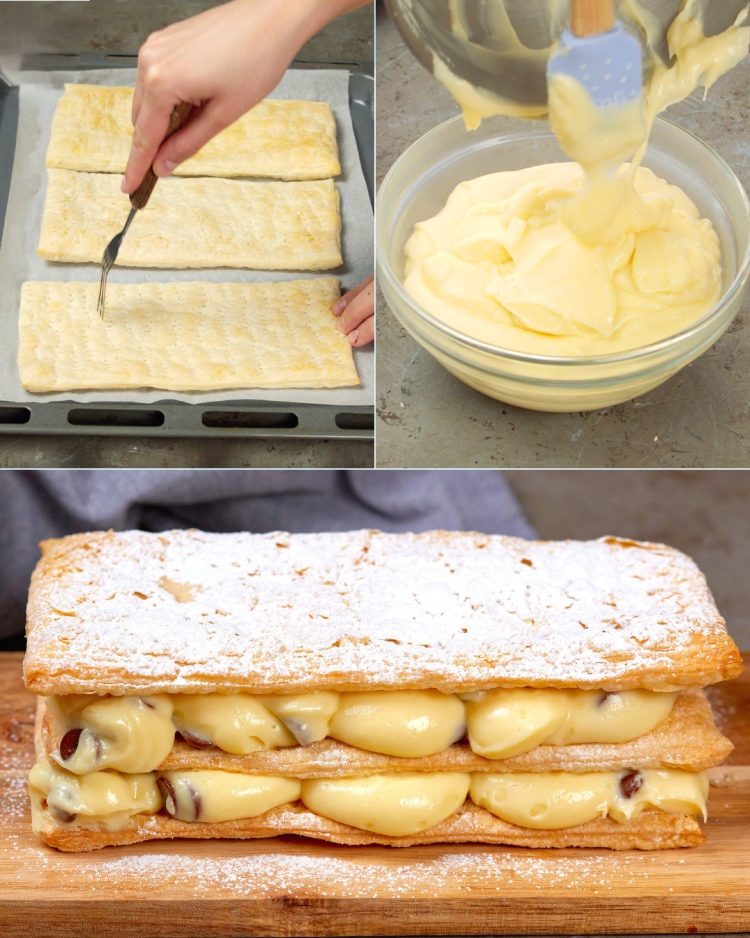Creamy Mille-Feuille (Napoleon Dessert): The Easiest Recipe for a Creamy and Crunchy Delight!
Mille-feuille (pronounced “meel-foy”) is a classic of French pastry — a timeless, traditional dessert that delights everyone, young and old. Also known as Napoleon, it consists of three layers of fragrant puff pastry, interspersed with two layers of custard. Sprinkled generously with powdered sugar, it’s a crunchy, creamy treat perfect for a delicious end to a meal, special occasions, birthday parties, or anniversaries.
Thanks to the contrast between the crisp pastry and the soft, velvety cream, mille-feuille is simply irresistible. It’s also easier to make than you might think!
We recommend assembling and serving it just before eating, to fully enjoy its crumbliness and freshness.
Mille-Feuille’s Origins
The word mille-feuille translates to “a thousand leaves” in French, referring to the many delicate layers of puff pastry. The dessert’s history dates back to the 17th century, though its exact origins are debated. Over the centuries, mille-feuille has evolved into the layered delight we know today, typically filled with pastry cream and topped with powdered sugar or icing.
While the basic structure remains traditional, creative variations with fruit, jams, or flavored creams continue to showcase its versatility.
Mille-Feuille vs. Puff Pastry: What’s the Difference?
Though closely related, mille-feuille and puff pastry are not the same.
-
Puff pastry (pâte feuilletée) is a dough made of countless layers of dough and butter, folded and rolled meticulously to create a flaky texture.
-
Mille-feuille uses baked puff pastry as a base, layered with cream fillings to form the final dessert.
In short, puff pastry is the ingredient, while mille-feuille is the assembled dessert.
Are Mille-Feuille and Millefoglie the Same Thing?
Yes — mille-feuille and millefoglie are essentially the same dessert!
The only difference is linguistic: mille-feuille is French, while millefoglie is Italian. Both names mean “a thousand leaves,” and refer to the dessert’s delicate layers of pastry and cream. Minor regional variations might exist, but the heart of the dessert remains consistent across cultures.
Mille-Feuille vs. Vanilla Slice
While similar, mille-feuille and vanilla slice have notable differences:
-
Mille-feuille is a French patisserie classic, featuring thin, flaky layers of puff pastry and a light pastry cream filling, finished elegantly with powdered sugar or glaze.
-
Vanilla slice is common in British and Australian cuisines, often showcasing a denser custard filling between thicker pastry layers, with a simpler icing topping.
Both are delicious, but mille-feuille tends to be more delicate and refined, while vanilla slices lean toward hearty and homestyle.
